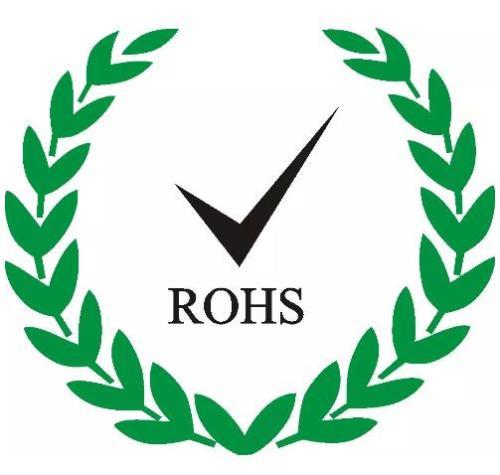ROHS authentication

ROHS authentication
What is ROHS certification?
RoHS stands for restriction of hazardous substances, ROHS, also known as Directive 2002 / 95 / EC, originated in the European Union, which restricts the use of specific hazardous materials in electrical and electronic products (known as EEE). After July 1, 2006, all applicable products on the EU market must comply with ROHS standards.
What are the RoHS restricted materials?
The prohibited substances of RoHS include lead (PB), mercury (Hg), cadmium (CD), hexavalent chromium (CrVI), polybrominated biphenyls (PBB), polybrominated diphenyl ethers (PBDE) and four different phthalates (DEHP, BBP, BBP, DiBP).
ROHS authentication
Why is RoHS compliance important?
Restricted materials are harmful to the environment and contaminate landfills, and are hazardous in terms of occupational exposure during manufacturing and recycling.
How to test the product to ROHS standard?
Portable RoHS analyzer, also known as X-ray fluorescence or XRF metal analyzer, is used to screen and verify restricted metals. With the emergence of RoHS 3 and four phthalates, different tests are required to determine the content of these compounds, which are extracted by solvent.
Which companies are affected by the RoHS directive?
Any enterprise that directly sells or distributes the applicable EEE products, subcomponents, components or cables to EU countries, or to distributors, distributors or integrators will be affected if they use any restricted materials. As RoHS like regulations have been extended to many other countries, this is no longer applicable to EU countries.
RoHS is also applicable to the metal industry. It is applicable to any metal plating, anodizing, chromating or other surface treatment on EEE components, radiators or connectors.
What is RoHS 2 and how is it different from the original RoHS?
The European Commission issued RoHS 2 or recast RoHS 2 directive 2011 / 65 / EU in July 2011, extending the scope of the original RoHS to cover all electrical / electronic equipment, cables and spare parts, meeting the requirements of 22 July 2019 or earlier, depending on the product category.
RoHS 2 is also a CE marking directive, and now it requires CE marking of products complying with ROHS standards. Therefore, all electrical / electronic product manufacturers must comply with ROHS 2 in order to apply CE marking to their products. Since the CE mark now contains RoHS compliant, the original green RoHS label with a check mark is no longer required or used.
Any product within the scope of RoHS 1 requirements shall not contain any of the six restricted substances, and companies (manufacturers, importers or distributors) placing products on the EU market shall keep records to show compliance. RoHS 2 requires everyone in the supply chain to have additional compliance records. Additional compliance record keeping (which must be kept for 10 years) can include conformity assessment, CE mark, compliance maintenance in the whole production process and non-compliance self report.
The proposed changes to the RoHS directive in rohs2 (2011 / 65 / EU) are relatively minor. There are no other substances added to the six substances currently restricted. RoHS category 8 (medical devices) and 9 (control and monitoring instruments) products are also added. RoHS 2 came into force on January 2, 2013.
What is RoHS 3 and how is it different from RoHS 2?
According to RoHS 3 or directive 2015 / 863 quoted in reach regulation, 6 additional restricted substances (phthalates) are added to the 6 original lists, and 11 products are added to the list. Rohs3 comes into effect on July 22, 2019.
What is RoHS 5 / 6?
RoHS 5 / 6 refers to the compliance of five of the six restricted substances (not lead (PB)), and lead in very specific applications of categories 8 and 9 can also be exempted for several years in Annex III. For more information, see RoHS appendix III lead exemption.
Will there be "RoHS 4"... Are there any other substances that will be restricted in the future?
It is possible to modify and incorporate the discussion of seven new substances (referred to as RoHS package 15). The other seven substances evaluated are: beryllium, cobalt (dichloride and sulfate), antimony trioxide, indium phosphide, medium chain chlorinated paraffins (mccps), nickel (sulfate and sulfamate) and tetrabromobisphenol A (TBBP-A).
How are RoHS and reach related?
Reach is a general regulatory and representative - [R administration, valuation, a delegation, regulatory instruments, and addresses the chemicals produced and used and their potential impact on human health and the environment. Reach is monitored by ECHA and currently processes 197 substances of high concern (SVHC). Although RoHS limits the presence of substances in electrical / electronic equipment (wiring, components, circuit boards, displays, sub assemblies, cables), reach controls all chemicals that may be used in the manufacture of products, including enclosures, brackets, coatings, paints, solvents, and chemicals used in the manufacture process.
It is worth noting that all RoHS restricted substances are also in the reach restricted substances list, and the substances on the list have been identified as carcinogenic, mutagenic, reproductive toxic, bioaccumulative and toxic, or as endocrine disruptors, please refer to the reach restricted substances list.
How are RoHS and WEEE related?
WEEE is the acronym for waste of electrical and electronic equipment. WEEE, also known as Directive 2002 / 96 / EC, regulates the treatment, recovery and recycling of electrical and electronic equipment. After August 13, 2006, all applicable products on the EU market must comply with WEEE standards and bear the label of "wheelie bin". WEEE compliance aims to encourage the design of electronic products to take environmental safety recycling and recycling into account. By reducing the use of hazardous chemicals in electronic manufacturing

